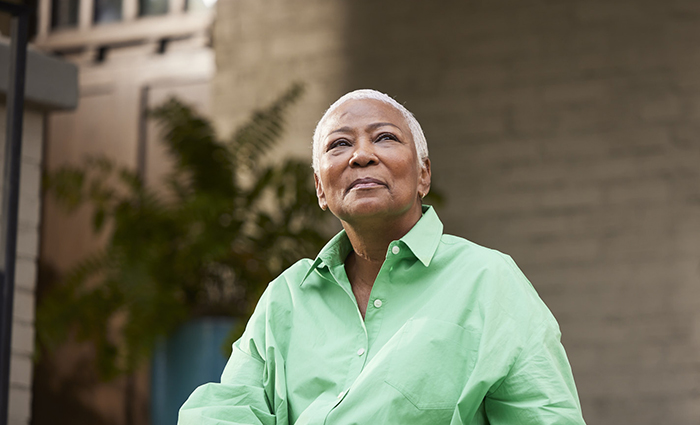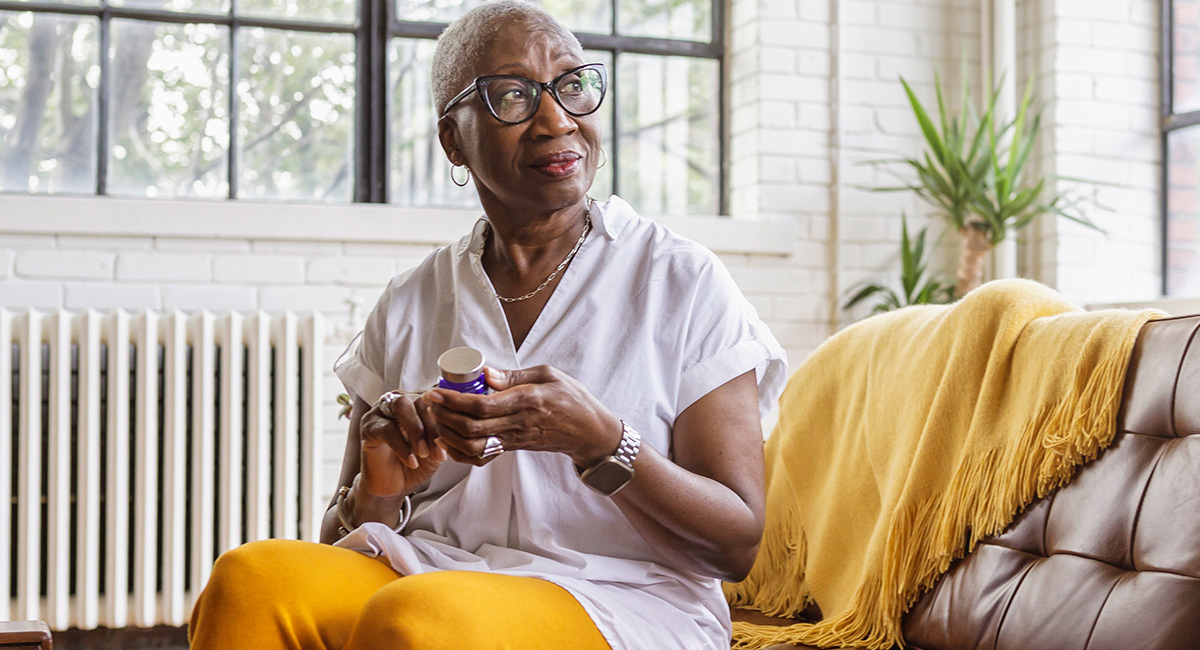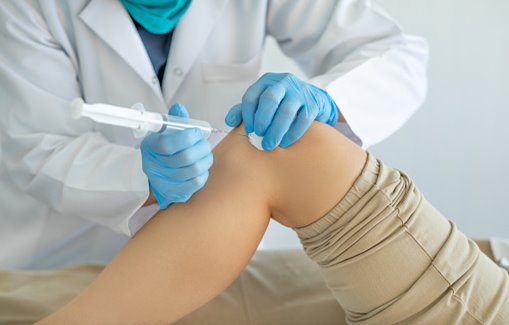CBD for Arthritis Pain: What You Should Know
Learn what the science says about the risks and benefits of CBD use for arthritis symptoms and what to shop for.
Updated July 29, 2024
CBD Overview
What is CBD? CBD, short for cannabidiol, is an active compound found in the cannabis plant. CBD will not get you high but may cause some drowsiness for some people. The CBD in most products is extracted from hemp, a type of cannabis. Legally, CBD products may have up to 0.3% THC, the active compound that gets people high.
Does CBD help with arthritis? Animal studies and some small human studies have suggested that CBD has pain-relieving and anti-inflammatory properties, but these effects need to be validated in larger, high-quality studies in humans. Many people with arthritis have tried CBD, but the anecdotal evidence they report is mixed. Some people report noticeable pain relief, sleep improvement and/or anxiety reduction, while others do not. As with any medication for arthritis, some people do not report any symptom improvements when taking CBD.
Is CBD safe to use? At this point very little still is known about CBD use among people with arthritis. So far, no serious safety concerns have been associated with moderate doses, but CBD may cause liver damage or fertility issues. It also has the potential to interact with some drugs commonly taken by people with arthritis. The potential for drug interaction is mostly based on theoretical considerations by understanding how a drug is metabolized in the body or on animal studies. Some drugs that could possibly interact with CBD include over-the-counter drugs, such as ibuprofen (Advil), naproxen (Aleve) and acetaminophen (Tylenol). Talk to your doctor before trying CBD if you take any of the following: corticosteroids (such as prednisone), tofacitinib (Xeljanz), celecoxib (Celebrex), tramadol (Ultram), certain antidepressants, including amitriptyline (Elavil), citalopram (Celexa), fluoxetine (Prozac), mirtazapine (Remeron), paroxetine (Paxil), sertraline (Zoloft), and certain medications for fibromyalgia, including gabapentin (Neurontin) and pregabalin (Lyrica). CBD also may interact with other medications that people take for other conditions, including the blood thinner warfarin. CBD products can have up to 0.3% of THC by weight — not by dose — so taking too much of a product may still cause THC-type effects. The greatest concern for safety is when a CBD product contains other products that are not identified on the label.
Are CBD products legal? CBD products made from hemp are no longer considered Schedule I drugs under the federal Controlled Substances Act, but they still remain in a legal gray zone. While you can legally purchase CBD products in nearly every state and online, their legal status may ultimately change at the state and federal level depending on how laws and regulations are developed and enforced. For example, people taking a legal CBD product can still have THC in their urine, which could have employment repercussions. People who want to use CBD should check their state laws.
Taking the First Step
Should I give CBD a try? Without quality clinical studies on CBD and arthritis, doctors have not been able to say who might benefit from CBD, who likely won’t benefit, and who should avoid it. It’s also unclear at what dose and in which form it may be beneficial. Still, there is agreement on several points:
- CBD is not a substitute for disease-modifying treatment for inflammatory arthritis.
- Patients who are interested in trying CBD should first talk to the health care provider who treats their arthritis before trying CBD. Together, they can review what has worked or not worked in the past, whether there are other options to try first, how to do a trial run, what to watch for and when to return for a follow-up visit to evaluate the results. Keep a symptom and dose diary to track effects.
- Quality CBD products can be expensive, especially when used for prolonged periods. To avoid wasting money, be completely sure that the product is truly having a positive effect on symptoms.
Please follow the advice below on how best to buy CBD products. Unfortunately, CBD products are not strictly regulated and there is considerable inaccuracy in what is on the label and what the product actually contains.
What type of product should I consider? CBD-based products can be taken orally, applied to the skin or inhaled. There are pros and cons for each.
Edibles. Experts discourage taking CBD via edibles, like gummies, cookies and flavored beverages, because dosing is unreliable and unnecessary sugar is not good for health in general. Furthermore, they are appealing to children but do not come in childproof containers. Like any medicine, edibles should be secured out of sight and reach of children.
Sprays and tinctures. CBD can also be absorbed directly into the bloodstream by holding liquid from a spray or tincture (a liquid dosed by a dropper) under the tongue (sublingual) for 60 to 120 seconds. The taste may not be pleasant. Effects may be felt within 15 to 45 minutes. If sprays or tinctures are swallowed, their effects tend to be similar to those of capsules or edibles.
On the skin. Topical products, like lotions and balms, are applied to the skin over a painful joint. Whether these products deliver CBD below the skin isn’t clear. In a few small trials using transdermal CBD solutions, participants reported improvements in hand pain from arthritis, but another trial found no significant improvements. Topical products may also include common over-the-counter ingredients such as menthol, capsaicin or camphor, making it difficult to determine if a positive effect is due to the CBD or another ingredient.
Inhaled. CBD can be inhaled via a vaporizing, or vape, pen. However, inhalation of vapor oils and chemical byproducts carry risks, particularly for people with inflammatory arthritis. Some vaping products, especially those purchased online rather than from state-licensed dispensaries, may also contain chemicals (such as Vitamin E acetate) that may cause severe pulmonary disease. As such, vaping should be approached with caution and is typically not recommended.
How much CBD should I use? While there are no established clinical guidelines, the medical experts consulted by the Arthritis Foundation recommend the following for adults:
- When preparing to take a liquid form, be aware that the CBD extract is mixed with a carrier oil, so there are two measures to know: the amount of the liquid product to take (the dose) and the amount of CBD in each dose. (For example, if your product contains 50 milligrams of CBD per milliliter, taking 0.5 milliliters would be a dose of 25 milligrams.)
- Go low and slow. Start with 5 to 10 milligrams of CBD in sublingual form twice a day. If relief is inadequate after three or four days, increase the dose by that same amount. If needed, go up in small increments over several weeks. If you find relief, continue taking that dose twice or more daily to maintain a stable level of CBD in your body. While CBD has few side effects, it can become quite expensive at doses above 100 milligrams per day.
- If CBD alone doesn’t work and you are in a state where medical or recreational marijuana is legal, talk to your doctor about taking CBD with a very low-dose THC product. Be aware that THC, even at low levels, may get you high, creating cognitive, motor and balance issues. Try THC-containing products at home or at night first, so you can sleep off any unwanted effects.
- After several weeks, if you don’t find relief with CBD alone or with a combination of CBD and very low THC, CBD may not be right for you, and it is best to discontinue the product.
- If you experience any unwanted side effects when using a CBD product, immediately discontinue use and inform your doctor.

Today, 1 in 4 adults in America live with arthritis
Nearly 60 million adults and children in America are diagnosed with arthritis, and most have pain that interferes with their daily lives. Every dollar you give helps provide research, support and services. Please give now to help conquer arthritis pain.
;What to Look for When Shopping
There is good reason to be a cautious shopper. CBD products are largely unregulated in the U.S. market. Independent testing has shown mislabeling and lack of quality control. The biggest issues are strength of CBD (significantly more or less than the label says), the presence of undeclared THC, and contamination with pesticides, metals and solvents. Here’s what to look for:
- Find products manufactured in the U.S. with ingredients grown domestically.
- Choose products made by companies that follow good manufacturing practices established by the FDA for pharmaceuticals or dietary supplements (a voluntary quality standard because CBD products are not federally regulated under either category) or required by the state where they are manufactured.
- Buy from companies that test each batch and provide a certificate of analysis from an independent lab that uses validated standardized testing methods approved by the American Herbal Pharmacopoeia (AHP), the U.S. Pharmacopeia (USP), NSF International, or the Association of Official Agricultural Chemists (AOAC). This should be indicated on the product label.
- Avoid companies that claim their products have benefits for diseases and medical conditions.
Be aware that marketers and people behind retail counters are not health professionals; they are salespeople. That’s why your doctor is your best source for guidance and monitoring when using an unregulated product.
The FDA has issued numerous warning letters to companies falsely representing their CBD products. If you believe a CBD product is being falsely represented, you can file a complaint with the Federal Trade Commission.
Hear more about CBD for arthritis in our Live Yes! With Arthritis Podcast.
Our gratitude, once again, to the following experts for their guidance and review:
Kevin Boehnke, PhD, a researcher at the Chronic Pain and Fatigue Research Center at the University of Michigan, focuses on medical cannabis as an analgesic and opioid substitute in chronic pain.
Daniel Clauw, MD, a professor of anesthesiology, rheumatology and psychiatry at the University of Michigan and director of the Chronic Pain and Fatigue Research Center, leads research on arthritis pain and fibromyalgia, and the effects of cannabis, particularly CBD, in pain.
Mary-Ann Fitzcharles, MD, an associate professor of medicine in the Division of Rheumatology at McGill University in Montreal, Quebec, conducts research on pain and rheumatic diseases. She is the lead author of the 2019 Canadian Rheumatology Association (CRA) position statement for medical cannabis.
Around the clock and all year long, we’ve got you covered with unique pain management tools and resources you won’t find anywhere else.
Together, we are conquering arthritis.
The resources we provide and the progress we make are only possible because of people like you. Your gift will help provide our community greater access to care, support and resources and fund groundbreaking research that brings us closer to a cure. Arthritis is relentless. So are we. Please give today!
CBD Guidance for Adults With Arthritis
Have you considered using cannabis for pain?

Stay in the Know. Live in the Yes.
Get involved with the arthritis community. Tell us a little about yourself and, based on your interests, you’ll receive emails packed with the latest information and resources to live your best life and connect with others.



